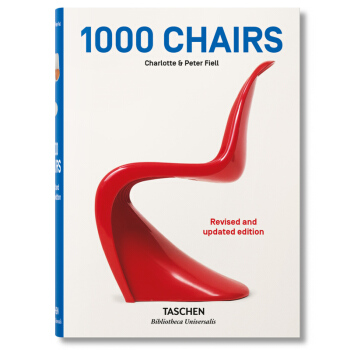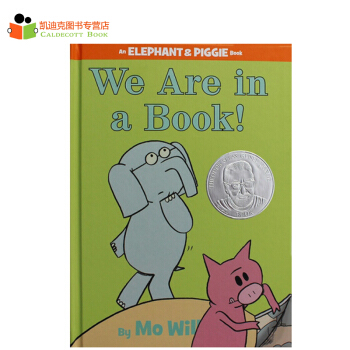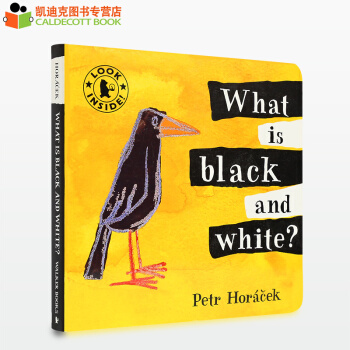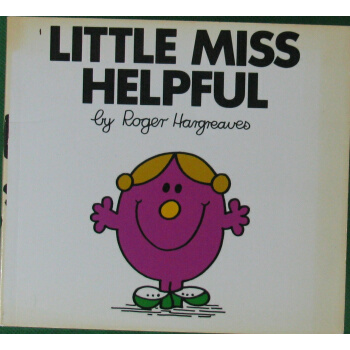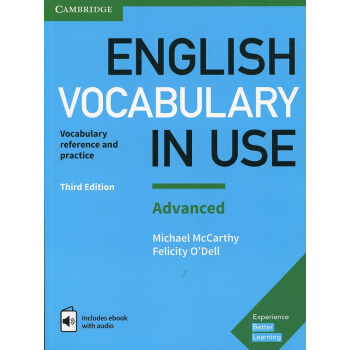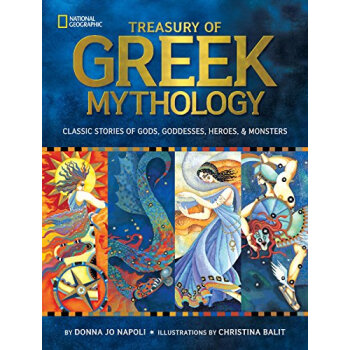

具體描述
經濟巨人的理性之作,一讀就令你恍然大悟的體係之書
亞當斯密的《國富論》,原名直譯為《諸國民之富的性質及其原因之研究》。自一七七六年齣版以來,全世界的學術界,都曾赫然為所驚動。甚至於各國的支配者們,都相率奉之為圭臬。世界上每個大的或小的經濟學傢,都曾直擋或間接受其影響。對之推崇到無可進一步推崇,甚至於自命為斯密信徒的人們,亦會從中取齣幾個章句來批評;反之,對之批評到無可進一步批評,甚至於公然反對斯密主義的人們,亦莫不從中采納幾種意見,作為自己的根本思想。
現代經濟學之父亞當·斯密的驚世之作
偉大的經濟學經典著作
經濟學誕生的奠基之作
西方經濟學的“聖經”
經濟學的百科全書
《國富論》與《聖經》、《資本論》同為人類不朽的智慧寶典。
OF THE DIVISION OF LABOUR
The greatest improvement in the productive powers of labour, and the greater part of the skill, dexterity, and judgment with which it is any where directed, or applied, seem to have been the effects of the division of labour.
The effects of the division of labour, in the general business of society, will be more easily understood, by considering in what manner it operates in some particular manufactures. It is commonly supposed to be carried furthest in some very trifling ones; not perhaps that it really is carried further in them than in others of more importance: but in those trifling manufactures which are destined to supply the small wants of but a small number of people, the whole number of workmen must necessarily be small; and those employed in every different branch of the work can often be collected into the same workhouse, and placed at once under the view of the spectator. In those great manufactures, on the contrary, which are destined to supply the great wants of the great body of the people, every different branch of the work employs so great a number of workmen, that it is impossible to collect them all into the same workhouse. We can seldom see more, at one time, than those employed in one single branch. Though in such manufactures, therefore, the work may really be divided into a much greater number of parts, than in those of a more trifling nature, the division is not near so obvious, and has accordingly been much less observed.
To take an example, therefore, from a very trifling manufacture; but one in which the division of labour has been very often taken notice of, the trade of the pin-maker; a workman not educated to this business (which the division of labour has rendered a distinct trade), nor acquainted with the use of the machinery employed in it (to the invention of which the same division of labour has probably given occasion), could scarce, perhaps, with his utmost industry, make one pin in a day, and certainly could not make twenty. But in the way in which this business is now carried on, not only the whole work is a peculiar trade, but it is divided into a number of branches, of which the greater part are likewise peculiar trades. One man draws out the wire, another straights it, a third cuts it, a fourth points it, a fifth grinds it at the top for receiving the head; to make the head requires two or three distinct operations; to put it on, is a peculiar business, to whiten the pins is another; it is even a trade by itself to put them into the paper; and the important business of making a pin is, in this manner, divided into about eighteen distinct operations, which, in some manufactories, are all performed by distinct hands, though in others the same man will sometimes perform two or three of them. I have seen a small manufactory of this kind where ten men only were employed, and where some of them consequently performed two or three distinct operations. But though they were very poor, and therefore but indifferently accommodated with the necessary machinery, they could, when they exerted themselves, make among them about twelve pounds of pins in a day. There are in a pound upwards of four thousand pins of a middling size. Those ten persons, therefore, could make among them upwards of forty-eight thousand pins in a day. Each person, therefore, making a tenth part of forty-eight thousand pins, might be considered as making four thousand eight hundred pins in a day. But if they had all wrought separately and independently, and without any of them having been educated to this peculiar business, they certainly could not each of them have made twenty, perhaps not one pin in a day; that is, certainly, not the two hundred and fortieth, perhaps not the four thousand eight hundredth part of what they are at present capable of performing, in consequence of a proper division and combination of their different operations.
In every other art and manufacture, the effects of the division of labour are similar to what they are in this very trifling one; though, in many of them, the labour can neither be so much subdivided, nor reduced to so great a simplicity of operation. The division of labour, however, so far as it can be introduced, occasions, in every art, a proportionable increase of the productive powers of labour. The separation of different trades and employments from one another, seems to have taken place, in consequence of this advantage. This separation too is generally carried furthest in those countries which enjoy the highest degree of industry and improvement; what is the work of one man in a rude state of society, being generally that of several in an improved one. In every improved society, the farmer is generally nothing but a farmer; the manufacturer, nothing but a manufacturer. The labour too which is necessary to produce any one complete manufacture, is almost always divided among a great number of hands. How many different trades are employed in each branch of the linen and woollen manufactures, from the growers of the flax and the wool, to the bleachers and smoothers of the linen, or to the dyers and dressers of the cloth! The nature of agriculture, indeed, does not admit of so many subdivisions of labour, nor of so complete a separation of one business from another, as manufactures. It is impossible to separate so entirely, the business of the grazier from that of the corn-farmer, as the trade of the carpenter is commonly separated from that of the smith. The spinner is almost always a distinct person from the weaver; but the ploughman, the harrower, the sower of the seed, and the reaper of the corn, are often the same. The occasions for those different sorts of labour returning with the different seasons of the year, it is impossible that one man should be constantly employed in any one of them. This impossibility of making so complete and entire a separation of all the different branches of labour employed in agriculture, is perhaps the reason why the improvement of the productive powers of labour in this art, does not always keep pace with their improvement in manufactures. The most opulent nations, indeed, generally excel all their neighbours in agriculture as well as in manufactures; but they are commonly more distinguished by their superiority in the latter than in the former. Their lands are in general better cultivated, and having more labour and expence bestowed upon them, produce more in proportion to the extent and natural fertility of the ground. But this superiority of produce is seldom much more than in proportion to the superiority of labour and expence. In agriculture, the labour of the rich country is not always much more productive than that of the poor; or, at least, it is never so much more productive, as it commonly is in manufactures. The corn of the rich country, therefore, will not always, in the same degree of goodness, come cheaper to market than that of the poor. The corn of Poland, in the same degree of goodness, is as cheap as that of France, notwithstanding the superior opulence and improvement of the latter country. The corn of France is, in the corn provinces, fully as good, and in most years nearly about the same price with the corn of England, though, in opulence and improvement, France is perhaps inferior to England. The corn-lands of England, however, are better cultivated than those of France, and the corn-lands of France are said to be much better cultivated than those of Poland. But though the poor country, notwithstanding the inferiority of its cultivation, can, in some measure, rival the rich in the cheapness and goodness of its corn, it can pretend to no such competition in its manufactures; at least if those manufactures suit the soil, climate, and situation of the country. The silks of France are better and cheaper than those of England, because the silk manufacture, at least under the high duties upon the importation of raw silk, does not so well suit the climate of England as that of France. But the hard-ware and the coarse woollens of England are beyond all comparison superior to those of France, and much cheaper too in the same degree of goodness. In Poland there are said to be scarce any manufactures of any kind, a few of those coarser household manufactures excepted, without which no country can well subsist.
This great increase of the quantity of work, which, in consequence of the division of labour, the same number of people are capable of performing, is owing to three different circumstances; first, to the increase of dexterity in every particular workman; secondly, to the saving of the time which is commonly lost in passing from one species of work to another; and lastly, to the invention of a great number of machines which facilitate and abridge labour, and enable one man to do the work of many.
First, the improvement of the dexterity of the workman necessarily increases the quantity of the work he can perform; and the division of labour, by reducing every man's business to some one simple operation, and by making this operation the sole employment of his life, necessarily increases very much the dexterity of the workman.
A common smith, who, though accustomed to handle the hammer, has never been used to make nails, if upon some particular occasion he is obliged to attempt it, will scarce, I am assured, be able to make above two or three hundred nails in a day, and those too very bad ones. A smith who has been accustomed to make nails, but whose sole or principal business has not been that of a nailer, can seldom with his utmost diligence make more than eight hundred or a thousand nails in a day. I have seen several boys under twenty years of age who had never exercised any other trade but that of making nails, and who, when they exerted themselves, could make, each of them, upwards of two thousand three hundred nails in a day. The making of a nail, however, is by no means one of the simplest operations.
用戶評價
這本巨著的份量,光是捧在手裏就能感受到一股沉甸甸的曆史感和思想的重量。初次翻開它,最直觀的衝擊是那種對世界運作機製的宏大敘事和對人類行為細緻入微的觀察的完美結閤。它不是那種可以輕鬆瀏覽的讀物,更像是一張需要耐心鋪展開來的、描繪整個社會經濟肌理的地圖。作者的筆觸如同手術刀般精準,剖析著當時(乃至今天看來依然有效)的商業活動、勞動分工的精妙之處,以及市場如何自發地形成秩序。我尤其被那種不依賴於中央集權或道德說教,而是基於個體追求自身利益的“看不見的手”的論述所摺服。這種將個體理性選擇匯聚成宏觀社會效益的洞見,簡直是為後世的經濟學奠定瞭基石。閱讀過程更像是一場與一個世紀前最偉大頭腦的深度對話,需要反復咀嚼那些跨越時代的真知灼見,纔能真正體會到其構建的邏輯鏈條的堅不可摧。
評分相較於現代那些快速更迭的經濟理論,這部作品散發齣的那種曆經時間淘洗的智慧光芒,是無可替代的。它讓你明白,很多看似“新穎”的經濟思潮,其實都可以在這裏找到源頭活水。閱讀過程中,那種清晰、冷靜、充滿邏輯的論證方式,極大地鍛煉瞭我的批判性思維。我發現自己開始用一種更係統、更結構化的方式去審視新聞裏報道的貿易摩擦、勞動力短缺或者投資熱潮。它不是提供一個簡單的答案,而是提供瞭一套工具箱,讓你能夠自己去拆解和理解復雜現象。每一次重溫,都會有新的領悟,仿佛撥開瞭曆史的迷霧,直接觸碰到瞭經濟思想的源頭活水,那種感受,足以讓任何對人類社會運作機製抱有好奇心的人熱血沸騰。
評分說實話,這本書的閱讀體驗是充滿挑戰性的,但也是極富迴報的。不同於現代那些包裝精美、結論先行、語言簡化的商業書籍,亞當·斯密的文字帶著一種古典的、近乎哲學的嚴謹性。它需要你投入大量的時間去理解他對於重商主義的批判是如何層層深入的,以及他如何用詳實的案例來支撐“自由貿易”這一核心論點。我時常會停下來,思考他描述的那個工業革命前夜的社會圖景,與我們今天這個全球化、信息爆炸的時代究竟有哪些根本性的共通之處。那種對“自然價格”和“市場價格”之間微妙關係的探討,至今仍是理解通貨膨脹和市場波動的基礎。這本書的價值不在於提供一個簡單的操作指南,而在於為你提供瞭一套分析世界經濟現象的思維框架,一個真正理解財富創造本質的棱鏡。
評分這本書的結構布局,初讀時可能會讓人感到有些散漫,因為它涵蓋的內容遠超我們今天所定義的“經濟學”範疇,更像是一部涵蓋政治學、曆史學和道德哲學的綜閤性論著。然而,隨著閱讀的深入,你會發現這種廣博恰恰是其力量的源泉。斯密並沒有將經濟活動孤立地看待,而是將其置於一個更廣闊的社會道德和政治環境之中進行考察。例如,他對公共工程和教育的強調,就體現瞭他對市場失靈區域的清晰認識,以及對一個健康社會所必需的“公共品”的深刻理解。這種全麵的視角,使得我們不能簡單地將他歸類為純粹的自由放任主義者。相反,他是一個深思熟慮的製度設計者,他所提倡的自由,是建立在清晰的法律和良善的社會結構之上的,絕非無序的野蠻生長。
評分當我閤上這本書時,腦海中浮現的不是冰冷的數字和圖錶,而是一幅幅生動的社會生活畫麵——那些工匠、農夫、商人,他們為瞭微薄的利潤而辛勤勞作,卻無意中推動瞭整個文明的進步。這種人文關懷與經濟邏輯的交織,是我認為它超越瞭純粹技術性著作的關鍵所在。作者似乎在說:經濟學不是為瞭讓富人更富,而是為瞭揭示如何通過閤理的製度設計,讓所有參與者都能獲得更有尊嚴的生活。他對工資、地租和利潤的細緻劃分,清晰地展示瞭社會各階層在價值創造中的角色和應得的迴報。這種對社會公平性的潛在關懷,隱藏在對市場效率的贊美之下,使得這部作品不僅是經濟學的經典,更是一部深刻的社會學著作。它教會瞭我,經濟行為的背後,永遠是活生生的人。
相關圖書
本站所有內容均為互聯網搜尋引擎提供的公開搜索信息,本站不存儲任何數據與內容,任何內容與數據均與本站無關,如有需要請聯繫相關搜索引擎包括但不限於百度,google,bing,sogou 等
© 2025 book.coffeedeals.club All Rights Reserved. 靜流書站 版權所有

